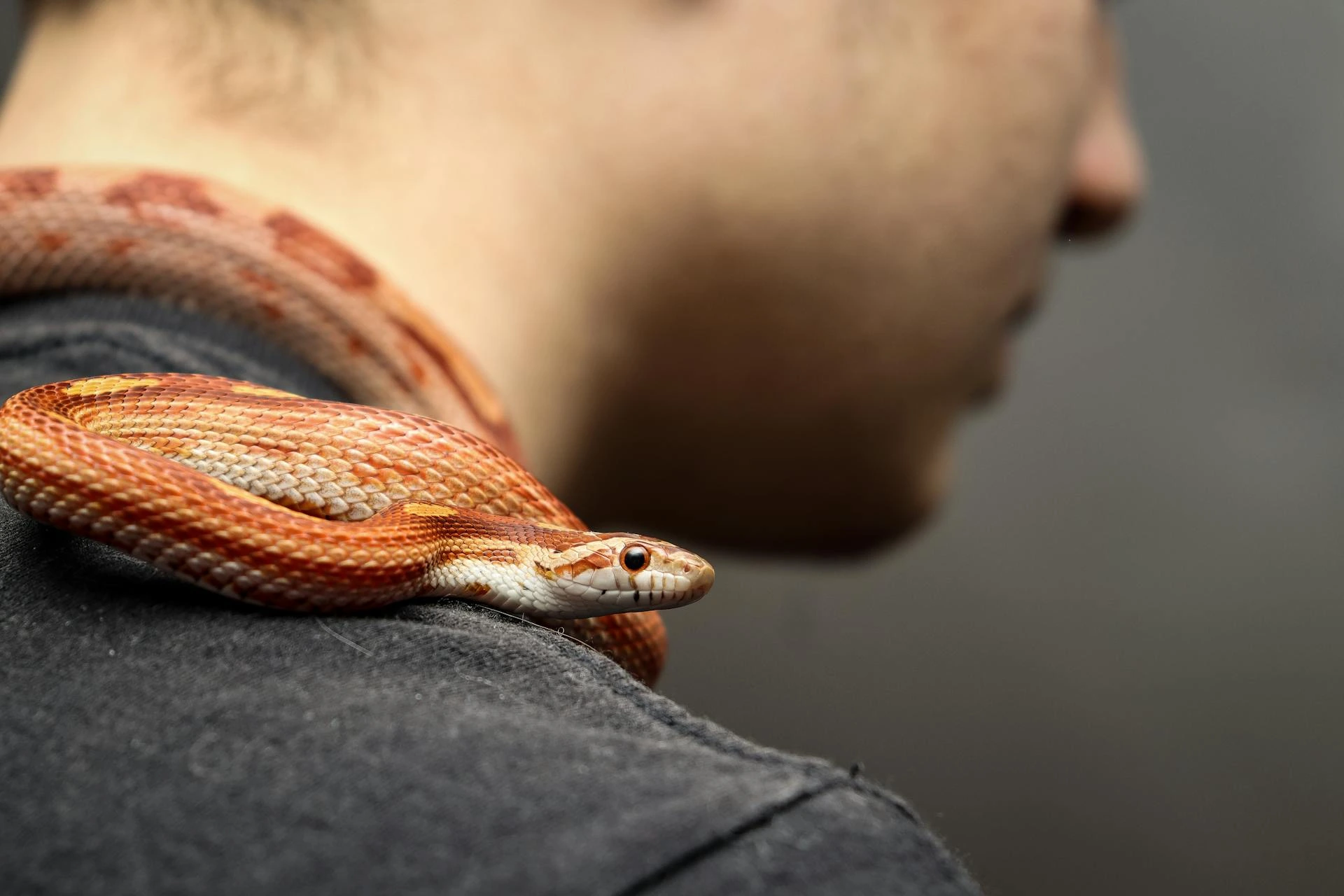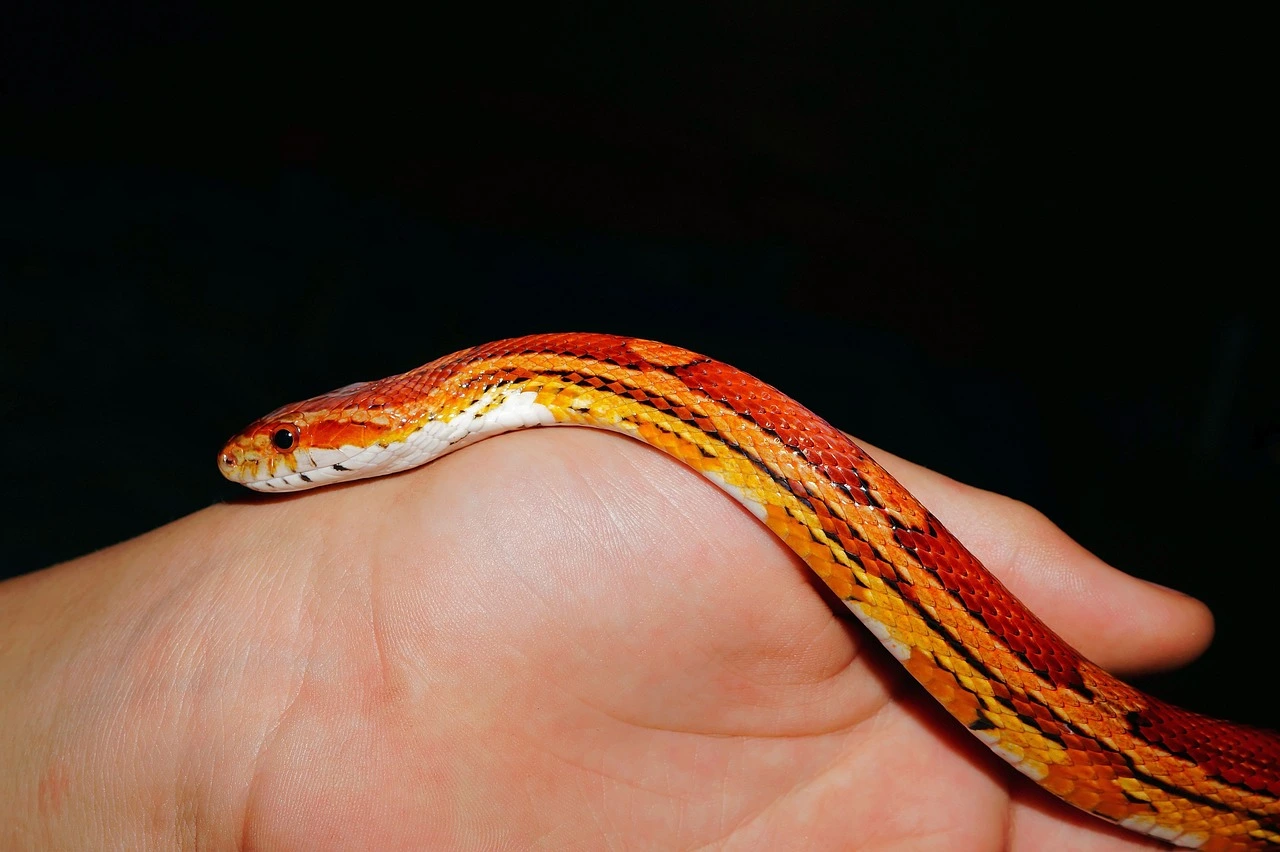Whether you're new to owning reptiles or have been keeping snakes for years, this Corn Snake Care Guide will cover everything you need to know to care for a corn snake.
Today, we’ll discuss everything from setting up their habitat to feeding and handling them, so you can make sure your snake stays healthy and happy for years to come.
Need reliable snake or reptile transport service? James Cargo Services offers safe and efficient pet relocation service. Get in touch today for safe pet reptile travels!
What is a Corn Snake?
Corn snakes (Pantherophis guttatus), also known as red corn snakes or red rat snakes, are a popular species of harmless colubrid snakes native to North America. They are found along the southeastern and central part of the United States.
Their popularity as pets comes from their hardy nature, ease of care, and adaptability to captive conditions. Like milk snakes and king snakes, corn snakes belong to the colubrid family, making them a great choice for reptile enthusiasts.
Are Corn Snakes Good Pets?
Yes! Corn snakes are excellent pets for beginners. They are docile, easy to handle, and require minimal care compared to other snakes. Their tough nature and adaptability to harsh conditions make these snakes easy to care for.
Corn snakes don’t grow too large, have simple dietary needs, and rarely show aggressive behavior.
Adult Size of a Corn Snake
Crn snakes typically grow to an adult size of 3 to 6 feet in lengtho, with some adults reaching up to 6.5 feet. Their slim bodies make them excellent climbers and burrowers.
Life Expectancy of a Corn Snake
With proper care, corn snakes can live for 15 to 20 years in captivity. Some well-cared snakes have been known to live even longer, making them a long-term pet for snake lovers.
How to Pet a Corn Snake at Home
Here’s how to pet a corn snake:
- Set Up a Secure Enclosure: Use a 40 gallon terrarium with a secure lid to prevent escapes.
- Create a Comfortable Environment: Provide hiding spots, climbing branches, and a water bowl. Use safe substrates like newspaper, reptile carpet, or aspen bedding.
- Maintain Proper Temperature & Humidity: Keep a temperature gradient of 70-85°F (21-29°C) with a basking spot at 88-90°F (27-32°C) and humidity at 30-50%.
- Feed Your Snake Properly: Offer thawed, pre-killed rodents every 5-10 days, depending on age. Always provide fresh water daily.
- Handle with Care: Handle your corn snake gently and confidently, supporting its body fully. Start with short handling sessions and avoid handling right after feeding.
- Keep the Enclosure Clean: Spot-clean daily and do a deep clean of the enclosure once a month. Replace substrate as needed.
- Monitor Health: Watch for signs of illness, such as loss of appetite, wheezing, or difficulty shedding, and consult a reptile vet.
Trust James Cargo Service for your snake transport needs. Safe, efficient, and professional care every step of the way.

Habitat of a Corn Snake
Corn snakes are native to North America, primarily found along the east coast from New Jersey to Florida. Their range extends westward into Louisiana and parts of Kentucky. They inhabit forests, grasslands, rocky hillsides, and abandoned buildings, often seeking shelter in logs, burrows, and barns.
Temperature and Humidity Needed for a Corn Snake
- Maintain a temperature range of 70-85°F (21-29°C), with a basking area at 88-90°F (27-32°C).
- Use under-tank heating pads or heat lamps to create a gradient.
- Keep humidity levels between 30-50%, increasing slightly during shedding if needed.
How to Feed a Corn Snake
- Juveniles eat every 5-7 days, while adults eat every 7-10 days.
- Feed pre-killed, thawed rodents to prevent injury.
- Always feed in a separate container to avoid accidental substrate ingestion.
- Provide fresh water daily for drinking and occasional soaking.
You might be interested in: How to Import Pet Birds to the UK?
How to Choose Your Corn Snake
- Buy from a reputable breeder to ensure a healthy, captive-bred snake.
- Look for clear eyes, smooth scales, and an alert, active demeanor.
- Avoid snakes with stuck shed, visible injuries, or signs of respiratory infections.
- Schedule a vet check-up soon after purchase for overall health assessment.
Common Health Issues in Corn Snakes
Regular vet visits can help prevent or catch health issues early. Common health conditions in these snakes include:
- Intestinal parasites
- Respiratory infections
- Mouth infections (stomatitis)
- Cloacal prolapse
- Constipation and egg retention
- External parasites (mites and ticks)
- Skin infections (“scale rot”)
- Burns and injuries from live prey
Need expert pet transport service? Rely on James Cargo Service!
Recognizing a Healthy Corn Snake
A healthy corn snake should have:
- Clear nostrils and eyes
- An active tongue flicking when handled
- A firm but gentle grip
- A rounded body shape
- Clean, firm skin with no retained shed
- A clean vent area
Safety Considerations for Corn Snakes
- Never allow your corn snake to free-roam unsupervised.
- Avoid direct contact with heating elements.
- Prevent exposure to toxic live plants or unsuitable substrates.
- Keep the enclosure away from cats, dogs, and other household pets.
Reptile Shipping with James Cargo Service
If you are looking for international reptile shipping to and from the UK, James Cargo Service provides reliable and professional pet shipping services. We ensure that your pet travels in a secure and comfortable environment, following all necessary regulations.
Final Thoughts on Corn Snake Care
Corn snakes are excellent pets for beginner and experienced reptile keepers alike. With this corn snake care guide, you’ll get educational information on the non-venomous snakes. By maintaining a safe and comfortable environment, monitoring their health, and handling them gently, you can ensure your corn snake remains a happy and thriving companion.
